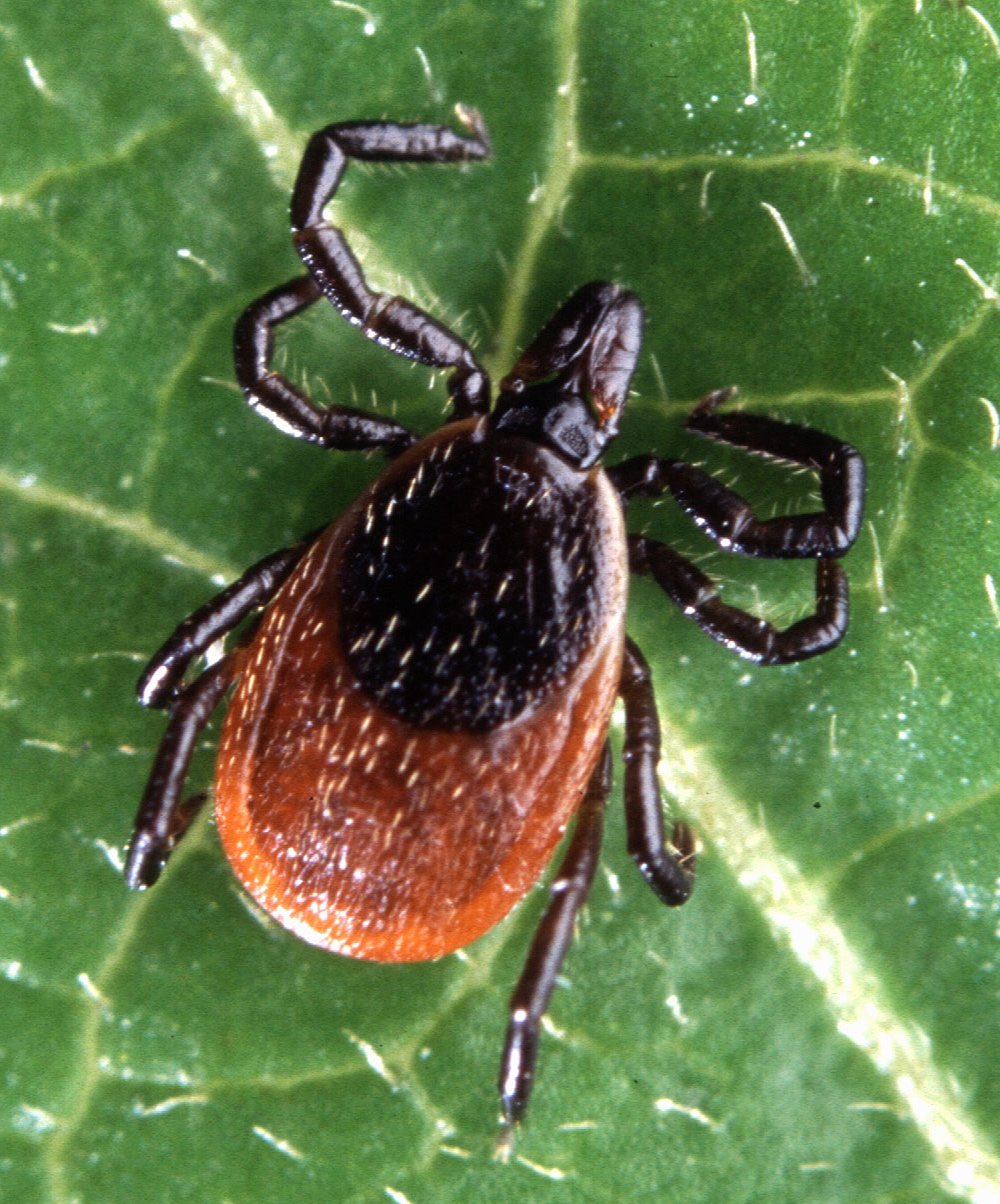Massachusetts Prepares For Tick Bite Explosion
Posted by Jennifer Smith on 8th May 2018
Few experiences are creepier than finding a tick attached to your body — except, perhaps, pondering the harmful germs the eight-legged critter may be injecting.
But ponder no more: If you send a tick to the University of Massachusetts Amherst, you can find out exactly what manner of microbe may have infected it — and possibly, you. Lyme disease is the most prevalent, but ticks carry several other viruses, parasites, and bacteria.
People who find a tick on their body can put it in a plastic bag — dead or alive — and mail it to the UMass lab. For a fee, confidential results come by e-mail within three days.

The germs ticks carry are a matter of growing concern: Last week, the Centers for Disease Control and Prevention said that reported illnesses from mosquito, tick, and flea bites more than tripled from 2004 to 2016.
In Massachusetts in 2017, some 8,692 people tested positive for Lyme disease, up from 5,829 four years earlier. But most cases are not reported, so Dr. Catherine M. Brown, deputy state epidemiologist, estimates that about 87,000 people a year are getting Lyme disease in the state.
Anaplasmosis/ehrlichiosis, the second most common tick-borne disease, was reported 341 times in 2013, and rose to 1,226 in 2017. That’s a 260 percent increase.
“So many people in Massachusetts are being impacted by at least one of these diseases,” Brown said. “It’s increasing dramatically.”
Stephen Rich, a microbiology professor and director of the Laboratory of Medical Zoology at UMass Amherst, said the increases probably reflect both more illness and more awareness. The biggest changes are in areas, such as upstate New York, where ticks are just starting to move in, he said.
In Massachusetts, ticks are always abundant statewide, so fluctuations in the tick population have little meaning, he said. People need to think of protecting themselves from bites in the same way they put on sunscreen at the beach — a necessary precaution, every year. To avoid tick bites, wear clothing treated with permethrin, apply DEET to the skin, check for ticks after being outside, and treat your yard and pets.
The TickReport program at UMass, which Rich runs, tested 14,000 ticks last year and expects to see many more in 2018. The program, which has received ticks from all 50 states, demonstrates the power of crowdsourcing, by gathering a wealth of information on the location of different tick species and the disease-causing microbes they carry, he said.
The only other way to track ticks is to drag a cloth over bushes and test the ticks that stick to it, he said. But that just gives a snapshot of a limited area on a given day. “That doesn’t reflect the ticks that are biting people,” Rich said.
TickReport goes directly to the source — the ticks’ human targets.
People who send a tick pay $50, $100, or $200, depending on how many microbes are being tested for.
A $100,000 federal grant announced Monday will subsidize those tests for Massachusetts residents. The goal is to get a better idea of the prevalence of the 23 potentially disease-causing microorganisms that ticks can carry.
Along with a discount added by the laboratory, the federal grant will lower the cost of the $100 test to $15 for the first 1,000 ticks the lab receives; then it will lower the $50 test to $15 for the next 1,500 ticks.
TickReport has been testing ticks since 2006. About 43 percent come from Massachusetts but not evenly across the state. Rich hopes to get more ticks from underrepresented areas, particularly the North Shore, the Berkshires, and Worcester County.
The tests don’t diagnose a person but they provide information that can guide medical decisions, Rich said.
TickReport has a partnership with another crowdsourcing project — TickSpotters at the University of Rhode Island, which is free.
With TickSpotters, people e-mail photos of bugs they think are ticks and provide basic information such as how long each was attached. The URI group identifies the species of tick and describes the risk of illness. Often the bugs pictured aren’t even ticks — the program has received photos of weevils and lice, said Thomas N. Mather, director of URI’s TickEncounter Resource Center.
Once participants get the basics from TickSpotters, those who want to know more are urged to send the tick to TickReport to find out if it was infected.
For example, a Rhode Island woman recently sent TickSpotters a photo of a tick that had been attached to her for less than a day, Mather said. The program identified it as an adult, female, black-legged tick, and advised that the risk of infection was low because the tick hadn’t been attached long enough to transmit illness. Still concerned, the woman sent the tick to UMass, where it was found to be infected with Lyme disease.
That doesn’t mean the woman has Lyme disease. A tick must feed for 36 to 48 hours before it transmits Lyme disease.
“If I were her, I would just be alert for symptoms. But we try to stay out of it at this point,” Mather said. The rest is up to the woman and her physician.
After years of trying to educate the public about ticks and the risk of illness, and finding that misinformation remains rampant, Mather has found TickSpotters to be a useful educational tool.
“I don’t think there’s anyone more engaged in learning about ticks than someone who has had a tick on them,” he said. “We’re personalizing education, approaching people at their most needy and receptive.”
TickSpotters, which started in 2014, has received nearly 46,000 submissions, collecting a wealth of data about locations of different species of ticks nationwide — data no one has had time to analyze, Mather said.
Re-posted from the Boston Globe. By Felice J. Freyer
